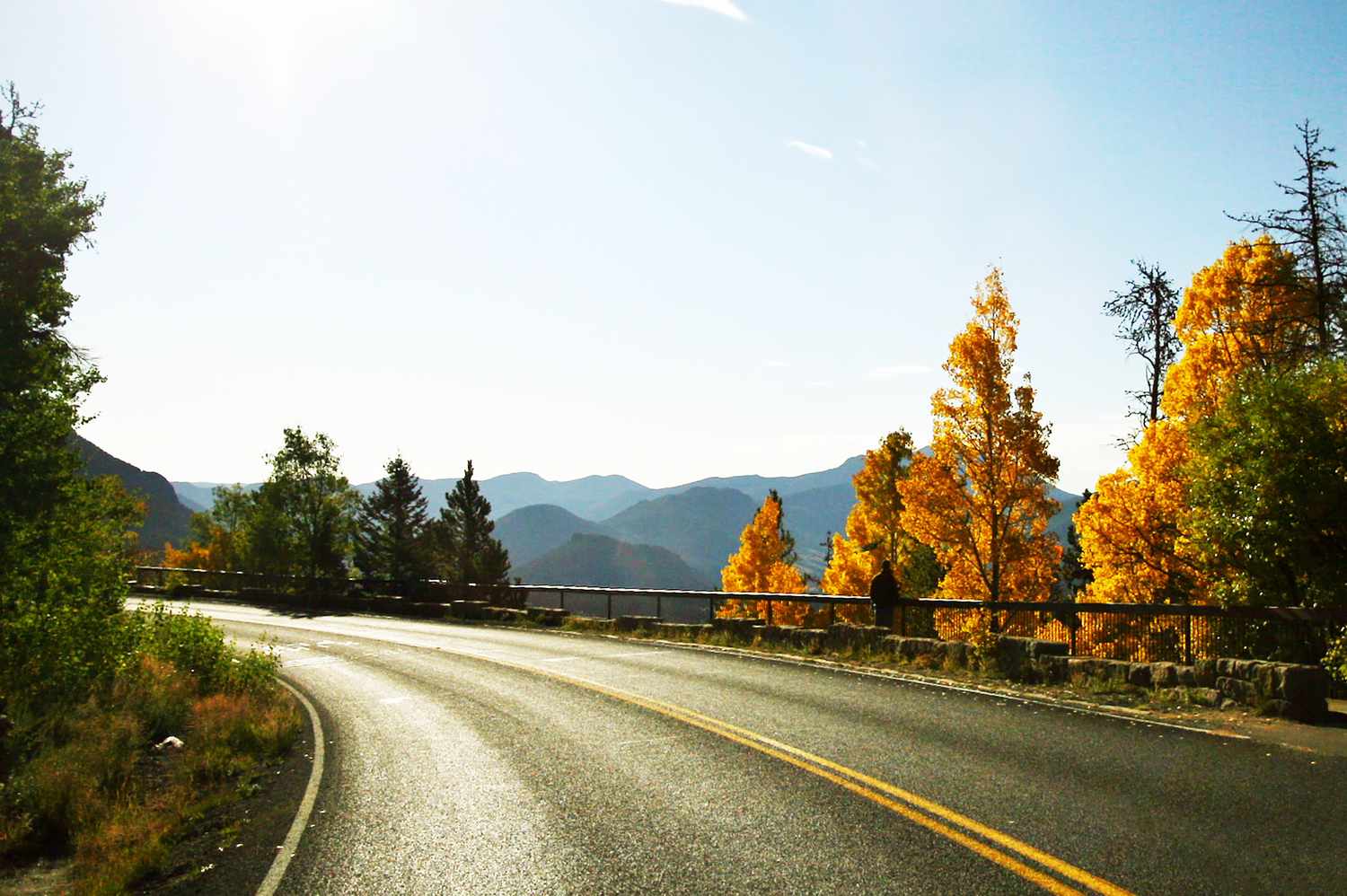:max_bytes(150000):strip_icc():format(jpeg)/TAL-header-trail-ridge-road-colorado-HGSTPVDROADNA1025-1c752acdb859449a846ad1b433aa7fbf.jpg)
There are many iconic drives in Colorado, but there’s only one that’s the highest continuous paved road in North America: Trail Ridge Road. This unbelievable 48-mile stretch takes you from Estes Park through Rocky Mountain National Park and on to Grand Lake.
The journey begins with winding roads surrounded by evergreen and aspen trees. In the fall, the mountainsides glow with golden leaves, making the lower portions of the drive especially magical.
As the road climbs, you gradually leave behind the dense forests and cruise above the tree line for about 11 miles. At its highest point, the road reaches 12,183 feet in elevation, and with sweeping views of the Rockies in every direction, it feels like you’re on top of the world.
The transition is dramatic. Above the tree line, the landscape changes completely with alpine tundra, jagged peaks jutting out in the distance, and skies that seem impossibly close.
JeffGoulden/Getty Images
Kyle Patterson, park spokesperson at Rocky Mountain National Park, told Travel + Leisure“When visiting the alpine tundra, it is our responsibility to help respect the fragile landscape these plants and wildlife call home. Park your vehicle in designated pullouts and walk on designated trails.”
Of course, traveling this high has its challenges. At such extreme elevations, the thin air can take a toll. Altitude sickness is a possibility for some travelers, so it’s best to take your time, stay hydrated by drinking plenty of water, and avoid pushing yourself too hard.
Patterson added, “Reaching higher elevations can literally and figuratively take your breath away. When getting out at overlooks along the road, remember to move slowly as the thin air may leave you feeling dizzy.”
The weather shifts quickly, too. Above the tree line, gusty winds are frequent, and temperatures can be 20 degrees colder than in Estes Park or Grand Lake, so bring a warm jacket.
As you continue, there are plenty of pull-offs to take in the scenery. Forest Canyon Overlook provides breathtaking views of glacier-carved valleys, while Medicine Bow Curve looks out across a sea of mountain peaks and the Cache la Poudre River flowing in the distance.
Wildlife also adds to the experience. Sightings are common throughout the drive—we saw elk grazing in open meadows during the fall, and you might also spot moose, mule deer, or bighorn sheep if you keep your eyes peeled.
Beyond its beauty, Trail Ridge Road is also an engineering feat. Construction began in 1929, and when it was completed in 1932, it opened up previously inaccessible alpine terrain to motorists for the first time. The road was carefully designed to follow natural contours, protecting fragile ecosystems while allowing travelers to experience the high country.
Because of its elevation, Trail Ridge Road is only open seasonally, according to Patterson. It typically welcomes travelers from late May through mid-October, weather permitting, which makes fall one of the best times to drive it. By September, the peaks often receive their first dusting of snow, while golden aspens brighten the lower stretches of the road, creating a mix that beautifully highlights the changing seasons in the park.
From vibrant fall colors to unforgettable wildlife encounters to the thrill of driving above 12,000 feet, Trail Ridge Road is one of the country’s most legendary drives—and one of my favorite ways to experience autumn.





